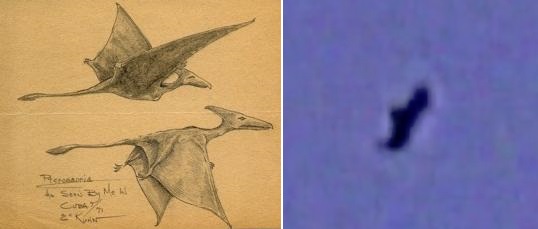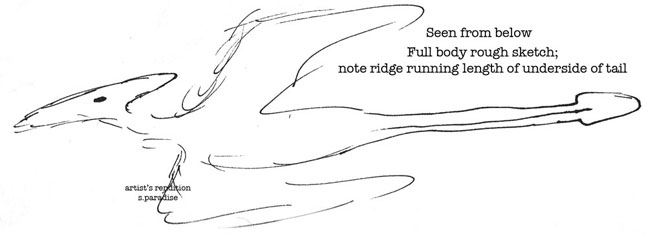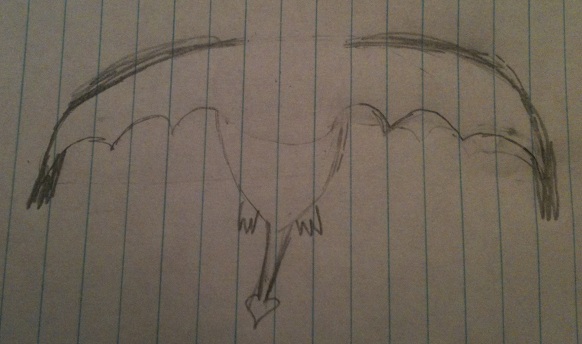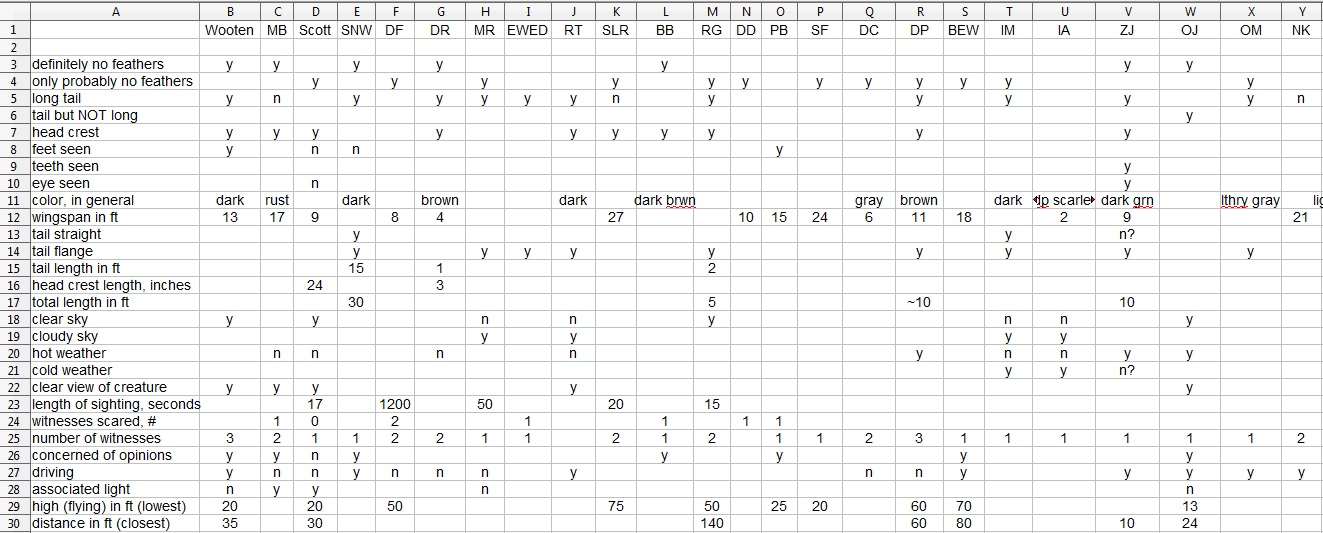By the ropen expert Jonathan Whitcomb
Yesterday, I uploaded another ropen video to Youtube: “Ropen Song – I’d never find you in a zoo.” I wrote the song especially for this mini-documentary about these nocturnal flying creatures, yet it will not be the last time I write a song about the ropen. This was the first time I ever sang for a Youtube video.
Here are the lines, not counting repetitions:
There’s an old world awaiting
Just north of Aubussi
It is Papua New Guinea
Predating history
I looked for you on Umboi
To see if you were you
For I thought I’d never find you in a zoo
You’re not a magic dragon
But you do live by the sea
On a far-off jungle island
In a land called Siassi

From the video “Ropen Song – I’d never find you in a zoo”
The first part of this song is a spoof on “I’ll never find another you” by the Seekers, of Australia (a top hit in the 1960’s). After the song, I explain why the skeptical attack against the ropen, related to the combination of the head crest and the Rhamphorhynchoid-like tail, is completely invalid and for more than one reason.
Watch the video here:
###
.
Why talk about hair on modern pterosaurs, or apparent living pterosaurs, now? I recently saw part of a video on Youtube, a highly critical attack against the possibility that such flying creatures exist. My video is a response to the idea that the ropen is not a real animal because it is reported to have no hair. Watch the video to get an introduction to my response . . .
.
A minority of the overall sightings have been of featherless flying creatures that seemed to have been less like the ropen and more like the pterosaurs known from fossils as Pterodactyloids. This “Declaration on the Ropen,” however, is about the ones that are more like Rhamphorhynchoids, those pterosaurs with longer tails.
.
Living pterosaurs in newspapers
That point of view of a typical newspaper reader means that news professionals generally take a skeptical view when writing about people who report observing large featherless flying creatures. That kind of skepticism comes out in the article, even should many eyewitnesses report such sightings in the same state or city. That is not just theoretical, for the state of North Carolina is an example, as is the city of Raleigh.
.
Should we fear living pterosaurs?
I suggest people be careful about wild animals in general, including apparent pterosaurs. We have much to learn about these flying creatures, and some of them, at least, may be dangerous.
.
Recent Sightings of Apparent Living Pterodactyls
- Connecticut
- Minnesota
- Ohio
.






